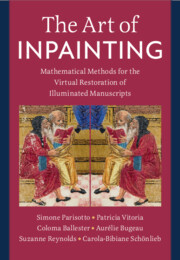Refine search
Actions for selected content:
81 results
Visual diagnostics for female genital schistosomiasis and the opportunity for improvement using computer vision
-
- Journal:
- Parasitology , First View
- Published online by Cambridge University Press:
- 12 September 2025, pp. 1-12
-
- Article
-
- You have access
- Open access
- HTML
- Export citation
Detecting Formatted Text: Data Collection Using Computer Vision
-
- Journal:
- Political Analysis , First View
- Published online by Cambridge University Press:
- 31 July 2025, pp. 1-7
-
- Article
-
- You have access
- Open access
- HTML
- Export citation
Development of a robust deep learning model for weed classification across diverse bermudagrass turfgrass regimes in China and the United States
-
- Journal:
- Weed Science / Volume 73 / Issue 1 / 2025
- Published online by Cambridge University Press:
- 25 June 2025, e50
-
- Article
-
- You have access
- Open access
- HTML
- Export citation
Precision agriculture can foster cropland weed diversity and protect endangered species
-
- Journal:
- Weed Science / Volume 73 / Issue 1 / 2025
- Published online by Cambridge University Press:
- 18 June 2025, e48
-
- Article
-
- You have access
- Open access
- HTML
- Export citation
Quantifying sitting posture: A pilot feasibility study of computer vision and wearable sensors (Posture Lab) using a manikin model
-
- Journal:
- Wearable Technologies / Volume 6 / 2025
- Published online by Cambridge University Press:
- 16 June 2025, e27
-
- Article
-
- You have access
- Open access
- HTML
- Export citation

The Art of Inpainting
- Mathematical Methods for the Virtual Restoration of Illuminated Manuscripts
-
- Published online:
- 22 May 2025
- Print publication:
- 22 May 2025
Mapping housing stock characteristics from drone images for climate resilience in the Caribbean
- Part of
-
- Journal:
- Environmental Data Science / Volume 3 / 2024
- Published online by Cambridge University Press:
- 02 January 2025, e29
-
- Article
-
- You have access
- Open access
- HTML
- Export citation
Evaluating enrichment use in group-housed rhesus macaques (Macaca mulatta): A machine learning approach
- Part of
-
- Journal:
- Animal Welfare / Volume 33 / 2024
- Published online by Cambridge University Press:
- 09 December 2024, e59
-
- Article
-
- You have access
- Open access
- HTML
- Export citation
Improving Computer Vision Interpretability: Transparent Two-Level Classification for Complex Scenes
-
- Journal:
- Political Analysis / Volume 33 / Issue 2 / April 2025
- Published online by Cambridge University Press:
- 09 December 2024, pp. 107-121
-
- Article
-
- You have access
- Open access
- HTML
- Export citation
WeedScan, a weed reporting system for Australia using an image classification model for identification
-
- Journal:
- Invasive Plant Science and Management / Volume 17 / Issue 3 / September 2024
- Published online by Cambridge University Press:
- 14 November 2024, pp. 219-227
-
- Article
-
- You have access
- Open access
- HTML
- Export citation
Dairy farming in the era of artificial intelligence: trend or a real game changer?
-
- Journal:
- Journal of Dairy Research / Volume 91 / Issue 2 / May 2024
- Published online by Cambridge University Press:
- 05 December 2024, pp. 139-145
- Print publication:
- May 2024
-
- Article
-
- You have access
- HTML
- Export citation
3 - FRT in ‘Bloom’
- from Part I - Facial Recognition Technology in Context
-
-
- Book:
- The Cambridge Handbook of Facial Recognition in the Modern State
- Published online:
- 28 March 2024
- Print publication:
- 04 April 2024, pp 44-59
-
- Chapter
-
- You have access
- Open access
- HTML
- Export citation
Vine variety identification through leaf image classification: a large-scale study on the robustness of five deep learning models
-
- Journal:
- The Journal of Agricultural Science / Volume 162 / Issue 1 / February 2024
- Published online by Cambridge University Press:
- 12 February 2024, pp. 19-32
-
- Article
-
- You have access
- Open access
- HTML
- Export citation
A variable stiffness robotic gripper based on parallel beam with vision-based force sensing for flexible grasping
- Part of
-
- Article
-
- You have access
- Open access
- HTML
- Export citation
Chapter 11 - Computer Vision for the Study of Older (and Younger) Adult Faces
- from Part V - Methodological Approaches to the Study of the Effects of Aging on Emotion Communication
-
-
- Book:
- Emotion Communication by the Aging Face and Body
- Published online:
- 07 December 2023
- Print publication:
- 07 December 2023, pp 265-285
-
- Chapter
- Export citation
Face Detection, Tracking, and Classification from Large-Scale News Archives for Analysis of Key Political Figures
-
- Journal:
- Political Analysis / Volume 32 / Issue 2 / April 2024
- Published online by Cambridge University Press:
- 06 November 2023, pp. 221-239
-
- Article
-
- You have access
- Open access
- HTML
- Export citation
